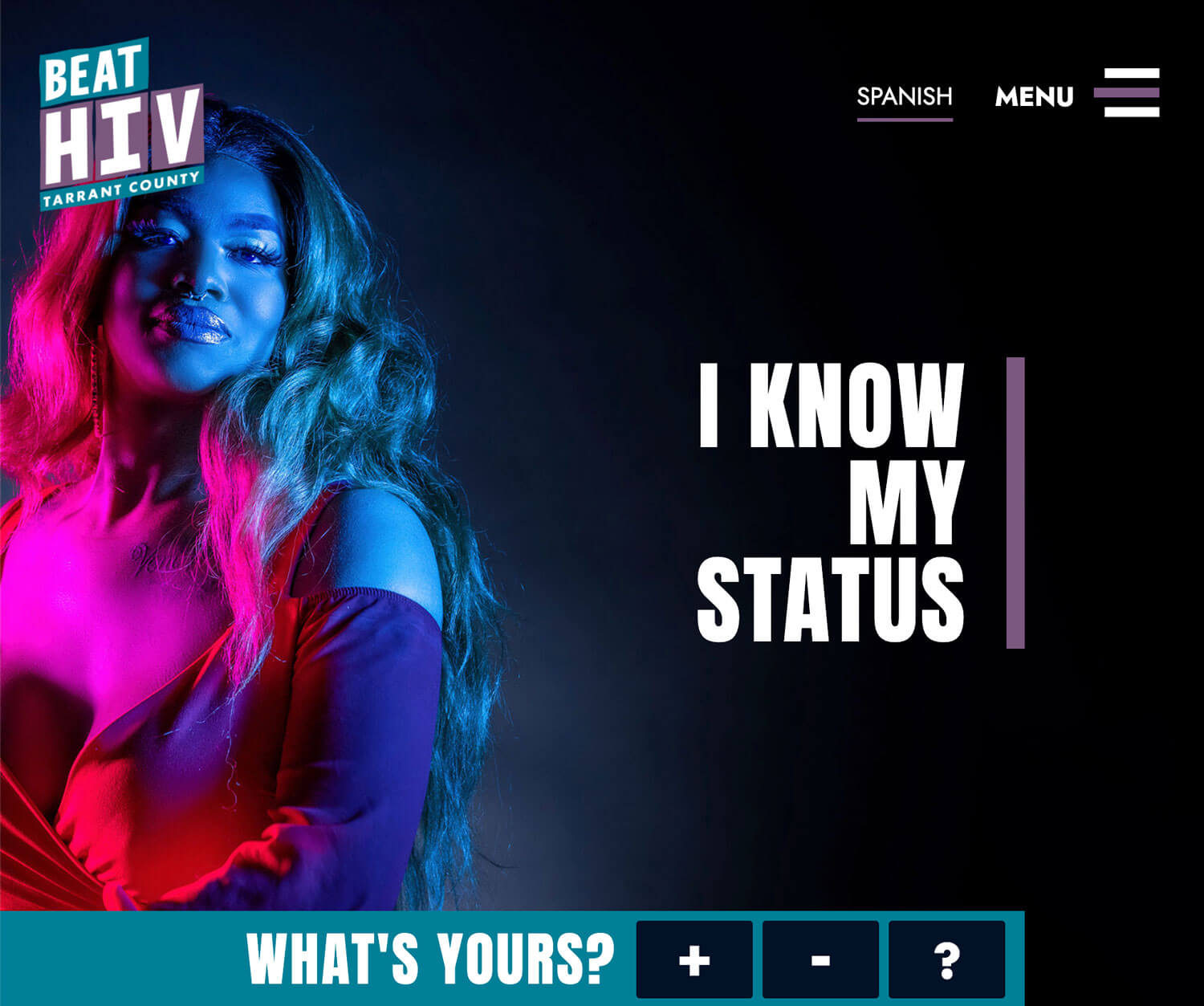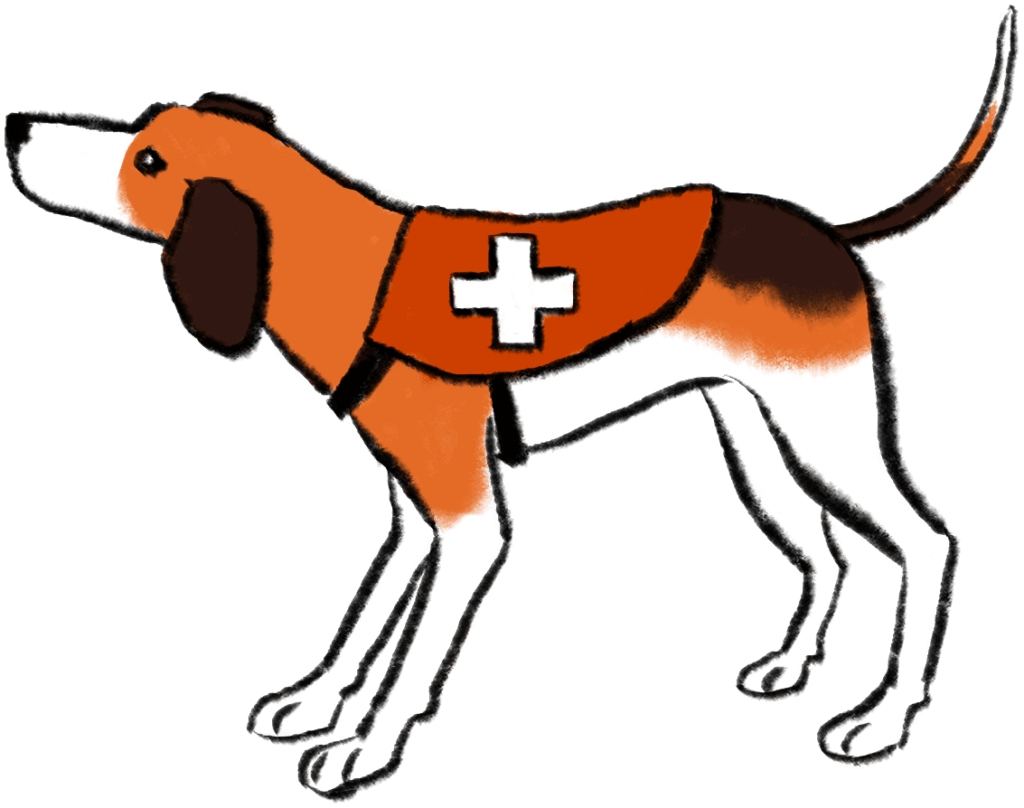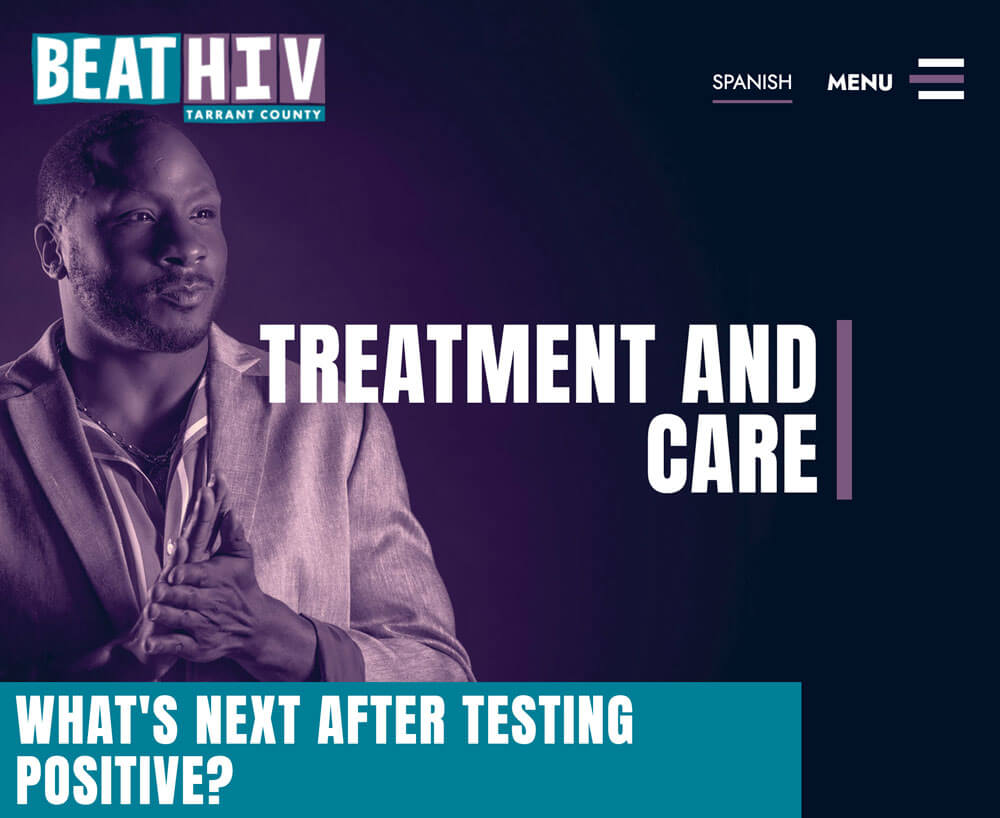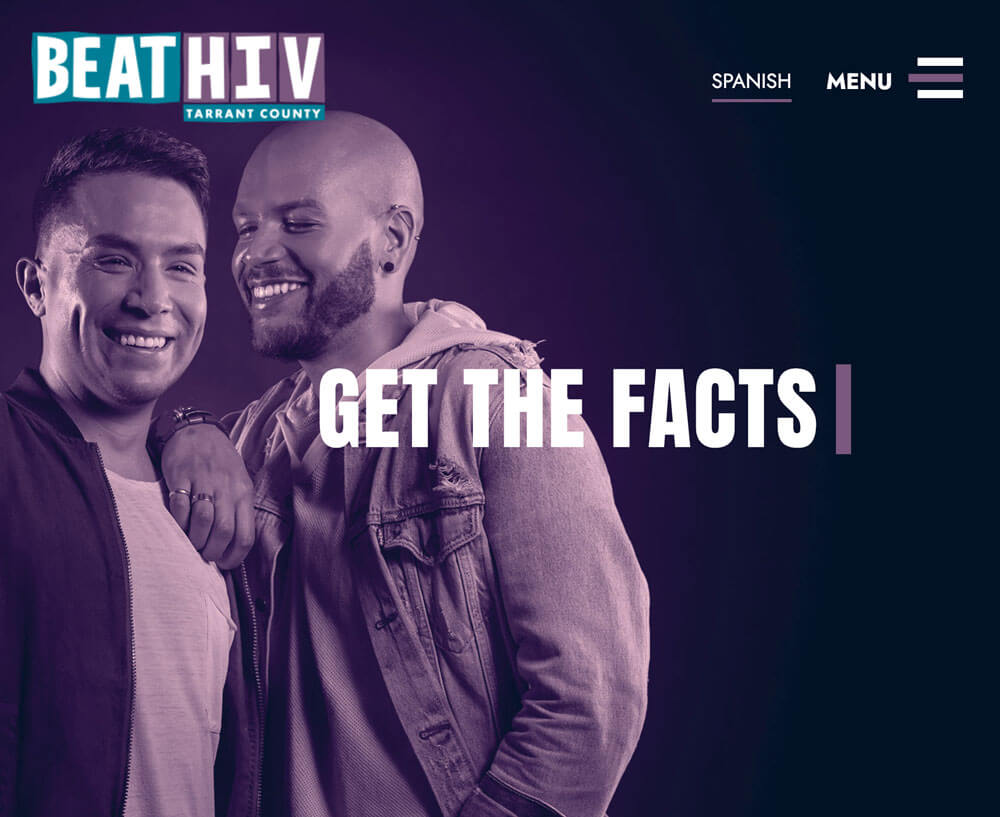
Public health website design & development
Project for:
Tarrant County Administrative Agency
This project was to design and develop a public health campaign website for Tarrant County’s HIV division.
This public health website was part of an effort to educate and reach populations most affected by HIV.

Expertise
Our scope included discovery, design, and website development. We provided the wireframed designs to Belmont, who added visual styling.

Client
The Tarrant County Administrative Agency is located in Fort Worth, Texas. It manages all HIV/AIDS funding for care and services in the North-central Texas area.

Timeline
We worked on this project for six months, from initial stakeholder discovery through launch of the campaign website. We continue to maintain and add enhancements.
Challenge
Reduce stigma associated with HIV
Tarrant County wanted to help community members suppress HIV, be fearless about learning of their diagnosis, and reduce stigma associated with HIV.
To do this, Tarrant County wanted to create a separate website for their HIV initiatives, so they could better reach their goal to virally suppress HIV among positive individuals in the Dallas-Fort Worth metro area.
They wanted the experience to be cool and fun and to present information in a non-intimidating way. Tarrant County wanted to acknowledge the fears surrounding diagnosis while giving hope to those at risk.
Solution
Design the public health website for three key audiences
The goal of the project was to ensure that community member’s fears are acknowledged, and to provide resources that show that you can live with an HIV positive diagnosis.
Because the target audience’s feelings about HIV varied, we recommended a design for individuals who new their status was positive, those who were negative, and those who didn’t know. For this group, we recommended creating an experience that would empower individuals to discover their status.
To do this, we needed to achieve these goals:
- Provide informative and easy to read resources to educate
- Create a space of community, support, and acceptance
- The experience needed cool, fun, edgy
- Information needed to be presented in a non-intimidating way

Impact
After launch of the public health website, indicators trended in a positive direction

Treatment and Care
The public health website had three main audiences, including individuals aware of their positive HIV status. The site showed how people with HIV who are undetectable cannot transmit HIV. We also highlighted success stories of those who are living with HIV to encourage people who recently found out about their diagnosis.

Tailored content
The content was tailored based on the user’s selection and that key information was presented at the top of the page along with other resources to support their diagnosis.

HIV Resources
Users were linked to resources based on their HIV status, and they were able to easily navigate to the resources provided for all statuses.
Free Download
How UX improves the patient experience
Download our free guide in PDF format to see how UX can help your healthcare organization or medical tech product.




